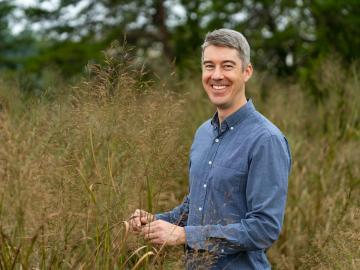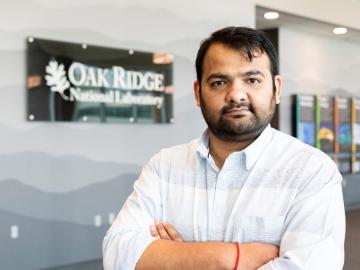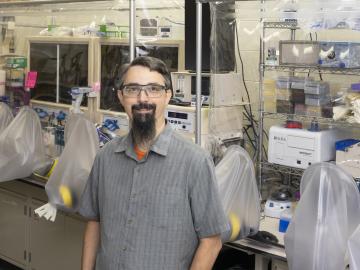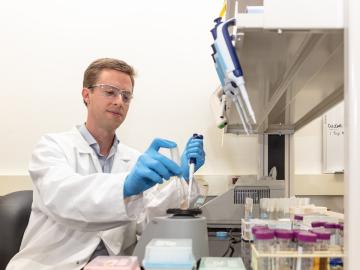
Filter News
Area of Research
- Advanced Manufacturing (1)
- Biological Systems (1)
- Biology and Environment (85)
- Biology and Soft Matter (1)
- Computer Science (1)
- Electricity and Smart Grid (1)
- Energy Science (63)
- Functional Materials for Energy (2)
- Fusion and Fission (5)
- Isotopes (1)
- Materials (29)
- Materials for Computing (4)
- National Security (13)
- Neutron Science (11)
- Nuclear Science and Technology (2)
- Quantum information Science (1)
- Supercomputing (40)
News Type
News Topics
- (-) Bioenergy (74)
- (-) Composites (15)
- (-) Energy Storage (47)
- (-) Environment (130)
- (-) Frontier (47)
- (-) Machine Learning (39)
- (-) Mercury (7)
- (-) Molten Salt (3)
- 3-D Printing/Advanced Manufacturing (73)
- Advanced Reactors (17)
- Artificial Intelligence (85)
- Big Data (49)
- Biology (86)
- Biomedical (46)
- Biotechnology (25)
- Buildings (37)
- Chemical Sciences (46)
- Clean Water (16)
- Computer Science (127)
- Coronavirus (23)
- Critical Materials (6)
- Cybersecurity (20)
- Education (2)
- Emergency (3)
- Exascale Computing (53)
- Fossil Energy (6)
- Fusion (47)
- Grid (35)
- High-Performance Computing (92)
- Hydropower (6)
- Irradiation (1)
- Isotopes (41)
- ITER (5)
- Materials (82)
- Materials Science (75)
- Mathematics (8)
- Microelectronics (3)
- Microscopy (31)
- Nanotechnology (29)
- National Security (67)
- Neutron Science (95)
- Nuclear Energy (79)
- Partnerships (42)
- Physics (40)
- Polymers (14)
- Quantum Computing (37)
- Quantum Science (52)
- Security (19)
- Simulation (46)
- Software (1)
- Space Exploration (14)
- Statistics (2)
- Summit (42)
- Transportation (41)
Media Contacts

For ORNL environmental scientist and lover of the outdoors John Field, work in ecosystem modeling is a profession with tangible impacts.

A team led by ORNL and the University of Michigan have discovered that certain bacteria can steal an essential compound from other microbes to break down methane and toxic methylmercury in the environment.

Marm Dixit, a Weinberg Distinguished Staff Fellow in the Emerging and Solid-State Batteries Group at ORNL, has been awarded a Toyota Young Investigator Fellowship for Projects in Green Energy Technology from the Electrochemical Society.

Anyone familiar with ORNL knows it’s a hub for world-class science. The nearly 33,000-acre space surrounding the lab is less known, but also unique.

An international problem like climate change needs solutions that cross boundaries, both on maps and among disciplines. Oak Ridge National Laboratory computational scientist Deeksha Rastogi embodies that approach.

Moving to landlocked Tennessee isn’t an obvious choice for most scientists with new doctorate degrees in coastal oceanography.

Improved data, models and analyses from ORNL scientists and many other researchers in the latest global climate assessment report provide new levels of certainty about what the future holds for the planet

As a metabolic engineer at Oak Ridge National Laboratory, Adam Guss modifies microbes to perform the diverse processes needed to make sustainable biofuels and bioproducts.

Scientists at ORNL and the University of Wisconsin–Madison have discovered that genetically distinct populations within the same species of fungi can produce unique mixes of secondary metabolites, which are organic compounds with applications in

In a step toward increasing the cost-effectiveness of renewable biofuels and bioproducts, scientists at ORNL discovered a microbial enzyme that degrades tough-to-break bonds in lignin, a waste product of biorefineries.


